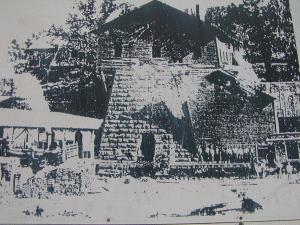LBL's Great Western Iron Furnace
The remains of this limestone slab furnace are all that is left of
The Great Western Iron Works. Great Western opened in 1855 and in a
34-week period produced 1,350 tons of iron. The production of 4-4-5
tons of iron required twenty bushels of charcoal, 800 pounds of
ore, and 80 pounds of limestone.
The furnace is a symbol of Stewart County's industrial heritage.
Before the Civil War, Stewart County was recognized as one of the
few industrial areas in the rural south. Stewart County residents
built communities around these furnaces, with most of the residents
depending on the furnaces for income. The last iron furnace in
Stewart County ended operation in 1927.
As for the Great Western Furnace, it's production ended only a year
after it started. In 1856 its owners put it up for sale. An
advertisement in the Clarksville Jeffersonian included the furnace,
four yokes of oxen, 12 wagons and gear, one set of carpenter's
tools, one set of blacksmiths tools, two extra steam engines, and
80 "likely and valuable negro men, experienced furnace hands."


TO SUCCESSFULLY LOG THIS EARTHCACHE:
A) Visit either the Center Furnace located at N36 53.989 W088
02.300 or the Great Western Furnace located at N36 38.424 W087
58.528 and upload a picture of yourself with GPS in the foreground
of the furnace ruins at the location.
B) Email me the answer to one of the two questions below: 1-What
was the Great West Furnace built of and where did this material
come from? 2-What are the 8 separate groups of people necessary to
operate one of these furnaces?
If you visit with a group, please list the caching names of the
others participating in your find.